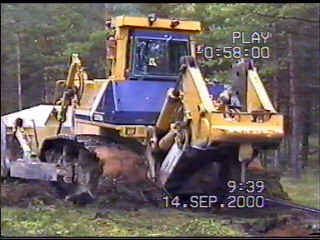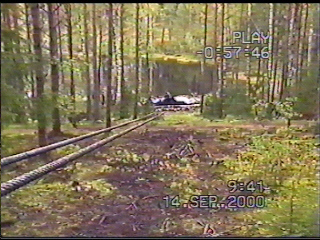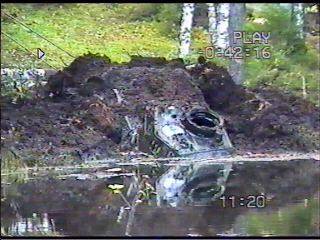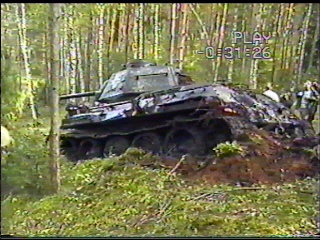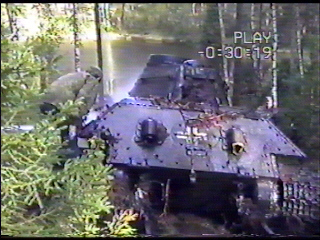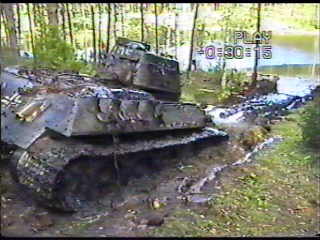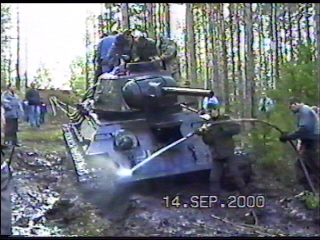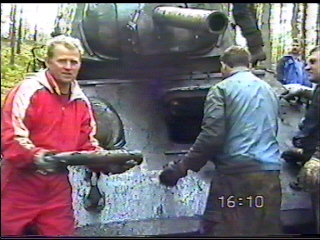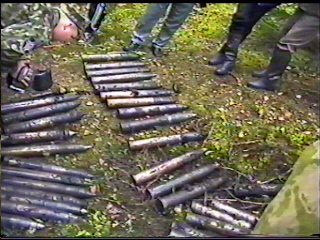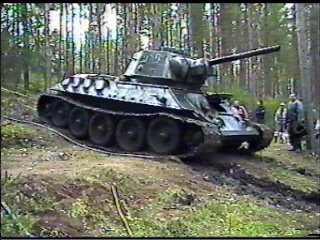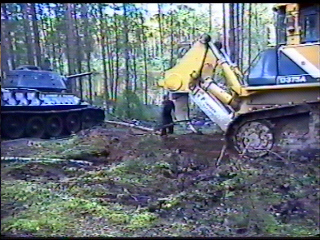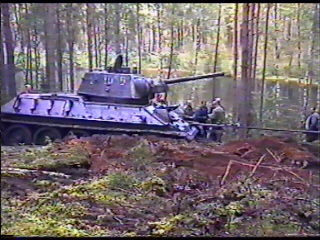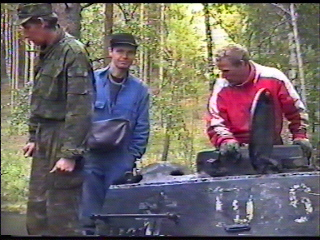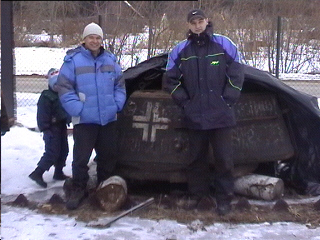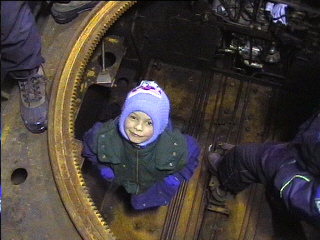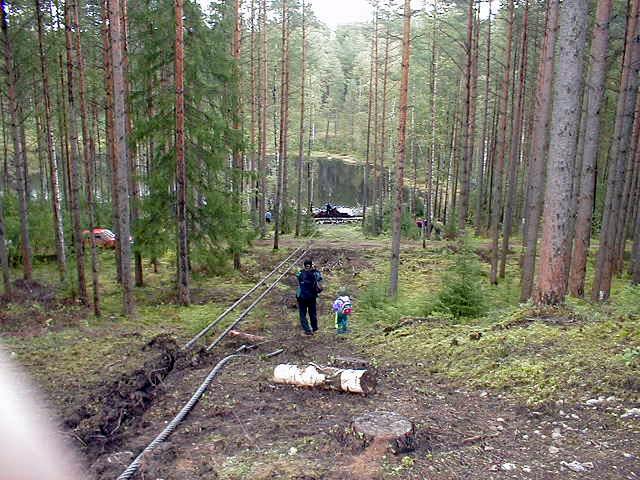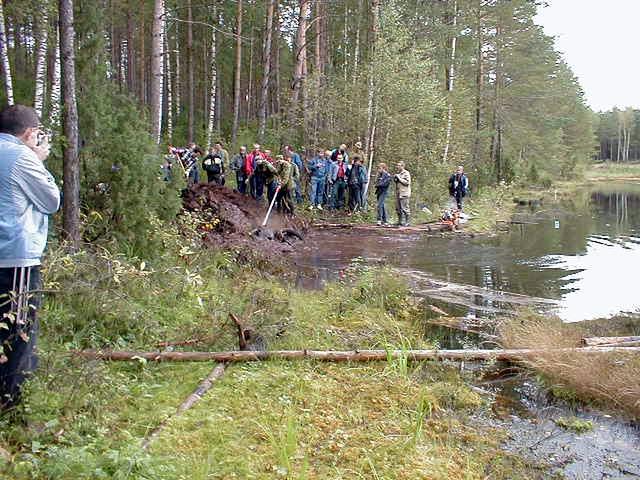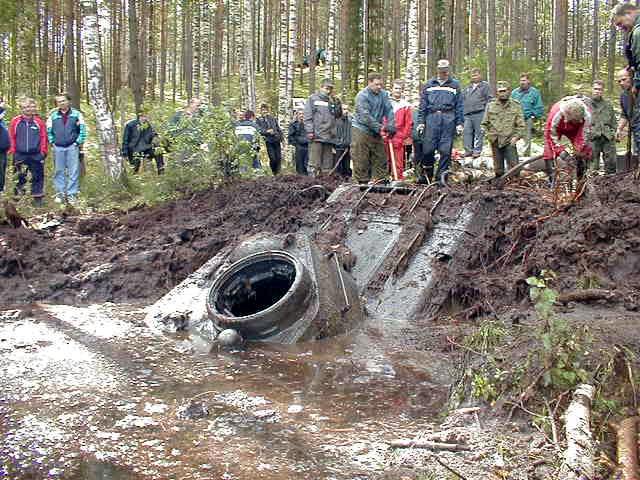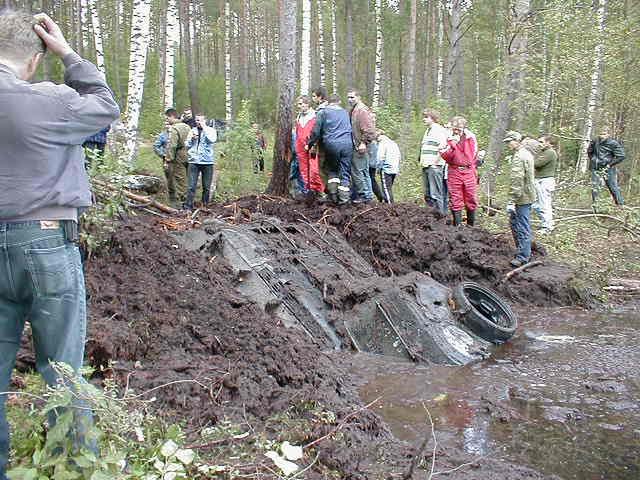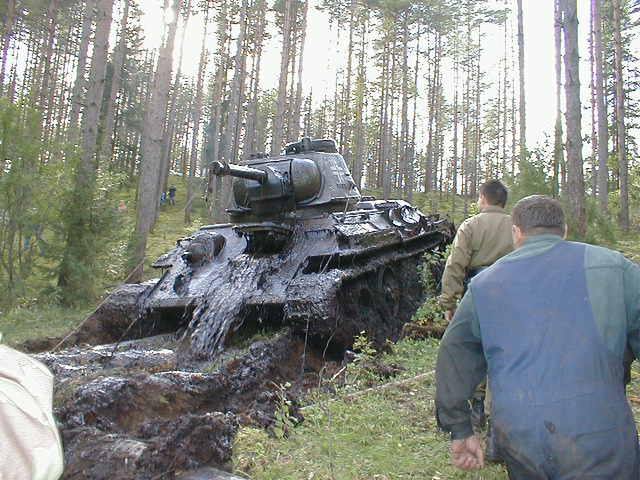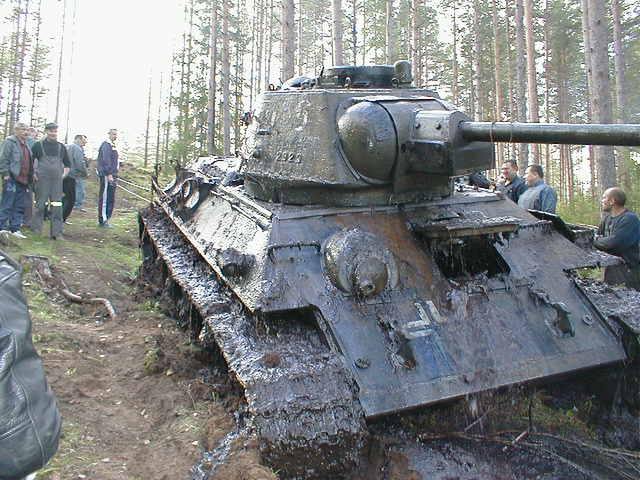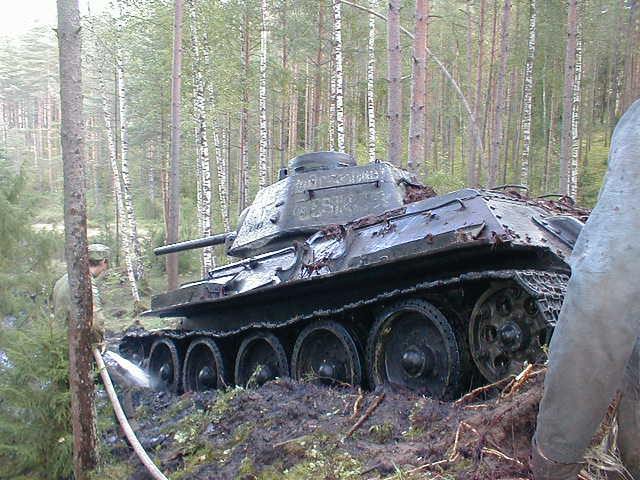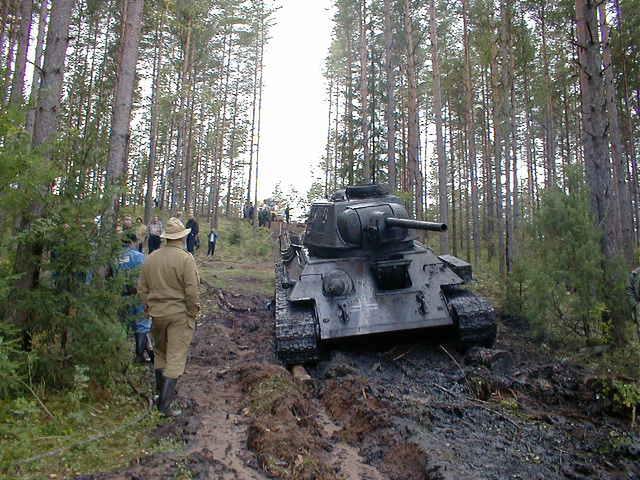- A Komatsu D375A-2 pulled an abandoned tank from its archival
tomb under the bottom of a lake nearJohvi, Estonia. The Soviet-built T34/76A
tank had been resting at the bottom of the lake for 56 years. According
to its specifications, it's a 27-tonne machine with a top speed of 53km/h.
-
- From February to September 1944, heavy battles were fought
in the narrow, 50 km-wide, Narva front in the north-eastern part of Estonia.
Over 100,000 men were killed and 300,000 men were wounded there. During
battles in the summer of 1944, the tank was captured from the Soviet army
and used by the German army. (This is the reason that there are German
markings painted on the tank's exterior.) On 19 September 1944, German
troops began an organized retreat along the Narva front. It is suspected
that the tank was then purposefully driven into the lake, abandoning it
when its captors left the area.
-
- At that time, a local boy walking by the lake Kurtna
Matasjarv noticed tank tracks leading into the lake, but not coming out
anywhere. For two months he saw air bubbles emerging from the lake. This
gave him reason to believe that there must be an armored vehicle at the
lake's bottom. A few years ago, he told the story to the leader of the
local war history club 'Otsing'. Together with other club members, Mr.
Igor Shedunov initiated diving expeditions to the bottom of the lake about
a year ago. At the depth of 7 metres they discovered the tank resting under
a 3-metre layer of peat.
-
- Enthusiasts from the club, under Mr Shedunov's leadership,
decided to pull the tank out. In September 2000 they turned to Mr Aleksander
Borovkovthe, manager of the Narva open pit of the stock company AS Eesti
Polevkivi, to rent the company's Komatsu D375A-2 bulldozer. Currently used
at the pit, the Komatsu dozer was manufactured in 1995, and has 19,000
operating hours without major repairs.
-
- The pulling operation began at 09:00 and was concluded
at 15:00, with several technical breaks. The weight of the tank, combined
with the travel incline, made a pulling operation that required significant
muscle. The D375A-2 handled the operation with power and style. The weight
of the fully armed tank was around 30 tons, so the active force required
to retrieve it was similar. A main requirement for the 68-tonne dozer was
to have enough weight to prevent shoe-slip while moving up the hill.
-
- After the tank surfaced, it turned out to be a trophy
tank, that had been captured by the German army in the course of the battle
at Sinimaed (Blue Hills) about six weeks before it was sunk in the lake.
Altogether, 116 shells were found on board. Remarkably, the tank was in
good condition, with no rust, and all systems (except the engine) in working
condition. This is a very rare machine, especially considering that it
fought both on the Russian and the German sides. Plans are under way to
fully restore the tank. It will be displayed at a war history museum, that
will be founded at the Gorodenko village on the left bank of the River
Narv.
-
-
- And this description from http://www.diving.ee/articles/art035.html
-
- The latest news about T-34.
- Have successfully started the diesel engine not replacing
any spare part.
- Have replaced only bearings on skating rolls.
- Assembly of the tank will soon come to the end and it
will be ready to trial runs.
- It is planned in the following season to carry on tourists
and to show it as a working exhibit of our museum.
-
- The detailed information about T-34.
- Germans have driven this tank in lake when fuel was terminated
at deviation in 1944. It laid on depth of 12 meters. Above it there were
6 meters of peat and silt. During two weeks divers of club washed away
silt above the tank. Any traces of solar oil or oil on water was not. Has
found the tank Igor Sedunov on memoirs of local residents. A technical
condition of the tank ideal. Fuel in tanks was not, and oil did not leave
the engine.
|

